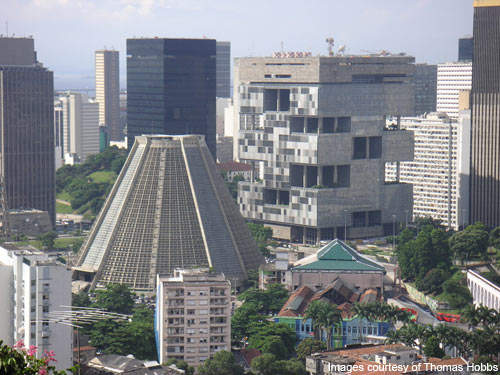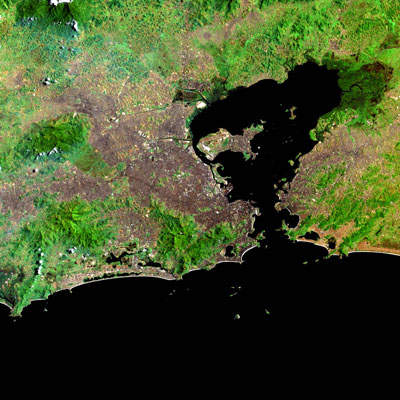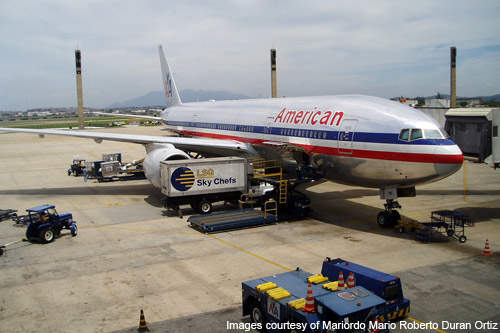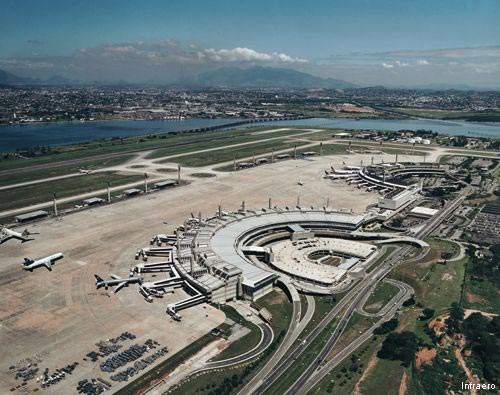Galeão – Antonio Carlos Jobim International Airport is located on Governador Island, 20km north of Rio de Janeiro, Brazil. It is Rio’s major international airport and an important gateway to Brazil.
The airport was formerly known as Galeão International Airport and is managed by state company Empresa Brasileira de Infra-Estrutura Aeroportuaria (Infraero). The airport opened in February 1952, and by 1970 it had become a major international and domestic hub.
Galeão has two passenger terminals. In 1977, Passenger Terminal 1 (PT1) was opened. In 1991, Infraero renovated PT1 ahead of the 1992 United Nations Earth Summit. After the expansion, the airport’s capacity increased to 7.5 million passengers per year. In July 1999, Passenger Terminal 2 (PT2) opened.
In August 2004, the airport became the main gateway to Brazil when many flights were transferred there from the overloaded Santos Dumont Airport.
In addition to its domestic destinations, Galeão connects to more than 18 countries and can handle up to 15 million passengers, 78,000t of cargo and 122,000 aircraft movements a year.
Expanding Rio’s main airport
In August 2009, an investment plan to upgrade Galeão was unveiled by Infraero. The decision to upgrade was taken to cater for the 2014 FIFA World Cup and 2016 Olympics, which will both be held in Brazil.
The upgrade includes the renovation of PT1 and its runways, the modernisation of passenger gates and the construction of new parking areas. In January 2012, a new approach light system was installed to enhance the safety of aircraft while landing, even during the night and under adverse weather conditions.
Terminal features at Galeão
The two passenger terminals are arranged in an oval shape and each features 12 jetways. The terminals are connected by a travelator (moving walkway).
Each of the three-storey terminal buildings accommodates arrivals on level one, check-ins and ticketing on level two and departures on level three. The airport also features a cargo terminal (TECA).
PT1 offers banks, bureau de change facilities, restaurants and a post office. PT2 has restaurants, bars and cafés in its central commercial area, which also accommodates duty-free and gift shops. Together, the two terminals have 168 check-in desks and 38 baggage claim belts, baggage wrapping services and have lost and found offices.
Other facilities include tourist help desks, car rentals, taxi services, first aid, baby/parent rooms and business centres. The terminals are equipped with lifts, automatic doors, telephones, toilets and car parking spaces for disabled passengers. PT1 has one four-star and one three-star hotel.
The cargo terminal can handle 20,000t of cargo, including dangerous goods, radioactive goods and heavy cargo. The terminal includes a warehouse and transit zone. Storage facilities such as heated storage, cold storage and deep-freeze storage are available. It also has facilities for quarantine, fresh meat inspection and livestock handling.
Brazilian airport’s IT systems
Galeão airport has a supervisory and control system for its air-conditioning. Programming software developed by Amir Engineering assists in the operation of the aircraft docking system at PT1. The company also provided communications software that monitors flight information.
Runways at Rio de Janiero’s airport
Galeão airport has two parallel runways. The first runway is 3,180m long, lies along 15/33 and is made from asphalt. The second runway is 4,240m long, lies along 10/28 and is made from concrete.
Transportation at Galeão
Galeão airport is connected to several access routes, including the Linha Vermelha and Linha Amarela freeways and Avenida Brasil.
Other major roads connected to the airport include the Avenida Vinte de Janeiro, the Estrada Itacolomi and the Estrada das Canárias.
The airport shuttle bus, which calls at major hotels and resorts, arrives at one-hour intervals. Public buses run from the airport to the city centre and the Novo Rio Rodoviaria bus station.
Empresa Real also operates air-conditioned Frescao buses from the airport to seafront destinations and hotels.
Passengers can use metered taxis or buy prepaid taxi vouchers from the Rio de Janeiro State Tourism Authority desk.
Parking at IATA: GIG
Galeão airport has multistorey and covered car parking areas. More than 1,200 short-term parking spaces are available. Short-term and long-term parking spaces are available in all car parks. The airport also has a parking area for disabled passengers.











